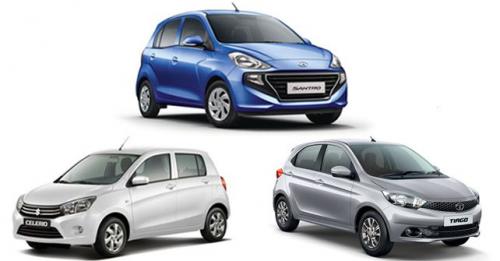
As technology takes centre stage in the in-car infotainment space, how will automakers react to this rising challenge of connecting smart phones to their vehicles and customers’ desire to be forever connected to the online world? We talk to Mr. Anil Sondur, VP, Tata Elxsi, to get a glimpse into what the future holds for infotainment and the technology behind it.
Do you think that touchscreen control systems will be fitted in a majority of cars in the future?
As technology in cars is becoming increasingly complex, the need for making it simpler to use becomes important. In the future, cars will have HMI (Human Machine Interface), which will be an integration of touch buttons on the steering wheel, with voice, gesture and other controls based on the steering so that an integrated environment will be provided to the driver. Also there would be minimum driver distraction with an aim to create a user-friendly environment.
With iOS and Android dominating the operating system landscape, will they play a major role in car infotainment systems of the future?
While performance and efficiency continue to be the strong areas, in-car technology has become one of the most important points of differentiation for automotive OEMs. So, mobile technology will play an important role in a car. That being the case, every OEM has to support multi-mobile operating technologies or at least the top two or three like iOS, Android, Windows amongst others.
Or do you think companies will favour their own custom operating systems?
Companies will not build their own custom operating systems as they do not have the bandwidth nor will it be feasible for them to do so. However OEMs will have to support all mobile operating systems. Instead OEMs might collaborate with operating system manufacturers to build customised operating systems.
What is your opinion about Wi-Fi connectivity in cars? Will it play a major role in the future with regards to vehicle diagnostics too?
Wi-Fi is slowly and steadily becoming the need for developing a complete in-car infotainment solution. With the increasing dominance of social media platforms in our daily lives, individuals prefer to be connected on the go. So, the connected lifestyle is becoming a reality sooner than expected, generating the demand for staying in touch at all times. Rear seat entertainment is of primary importance, as the driver is more of a controller of the entire in-car infotainment system. Passengers in the back seat are more likely to stream videos, songs or movies while they travel from one point to the other. Online gaming is becoming a craze amongst kids and many kids are hooked on to online games while travelling with their family. Therefore, it is evident that high-speed internet connectivity is slowly tending to be the need of the hour for building a robust infotainment solution, increasing the demand for the presence of a strong Wi-Fi system in the car.
As far as vehicle diagnostics systems are concerned, they are an automated procedure that indicate requirement of diagnosis for a certain automotive part that is malfunctioning. Providing improved vehicle diagnostics systems increases the efficiency as well as the functionality of the car. Wi-Fi will definitely aid in m2m connectivity, which, in turn, will increase the efficiency of automated vehicle diagnosis.
Also, will the increasing complexity not lead to problems for consumers to get used to the infotainment systems?
With the advancements in technology, our daily lives are getting more and more complicated. But surprisingly, individuals are embracing this complicated lifestyle. We are adapting to this ever changing ambience and making necessary adjustments in our daily life processes. In a way, infotainment systems are getting more and more accessible with amalgamation of various technologies. The consumer will find the in-car infotainment systems to be extremely easy to use but the technical person dealing with the technicalities might know the actual complexities. Consumers prefer a certain amount of automation in their driving experience while they are paying a premium to the vehicle manufacturers. Automation comes with its fair share of complexities that I think are being received well by the customers.
One of the drawbacks of touchscreen control systems is that it causes distraction for the driver as to use them they have to take their eyes off the road. How will technology manage that?
Presently we have been working with our automotive customers in developing and implementing multimodal features and HMI (Human Machine Interface) into their infotainment systems which include multiple modes of interactions including voice, touch, gestures and hard buttons, to reduce driver distraction.























Write your Comment